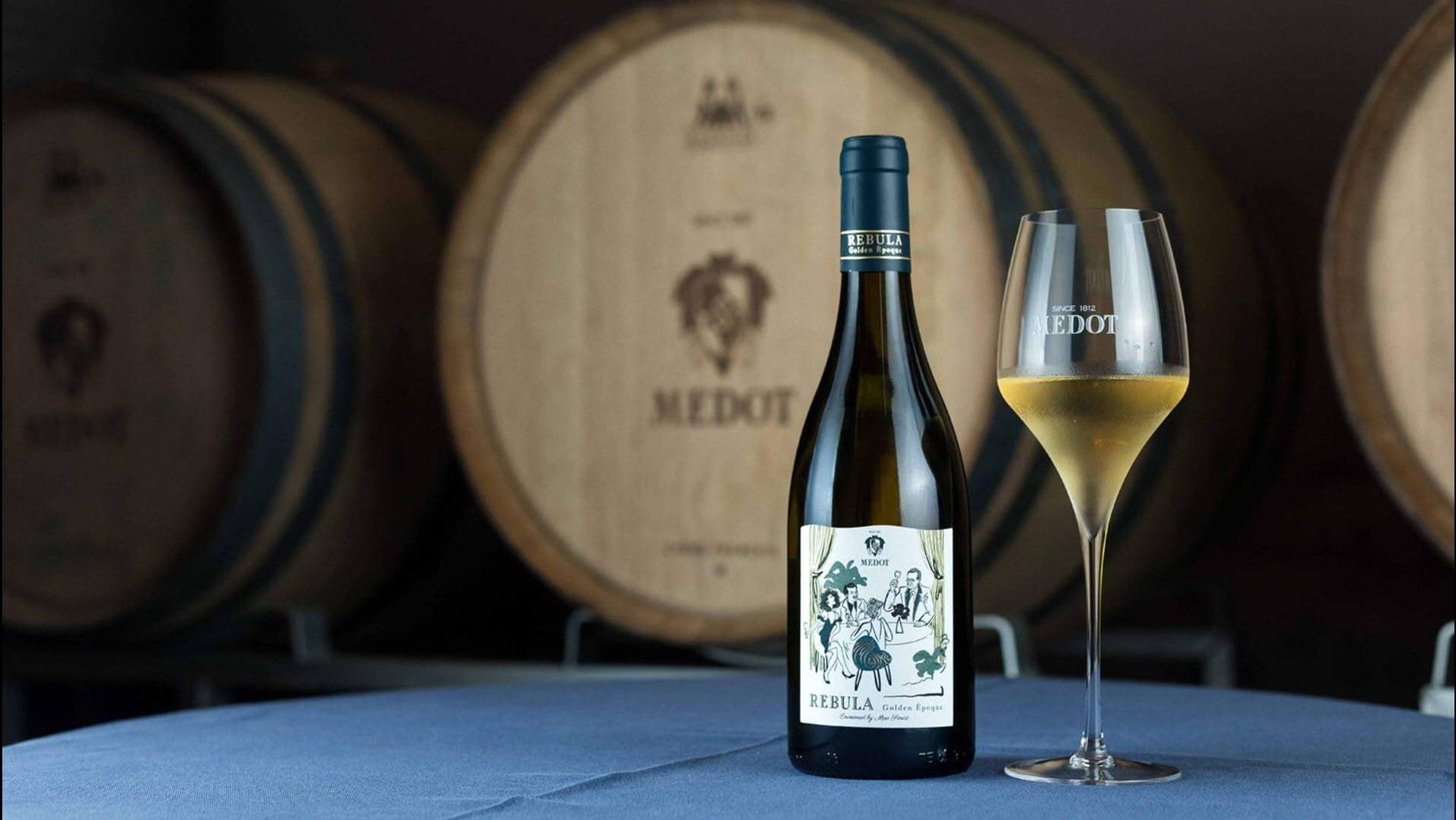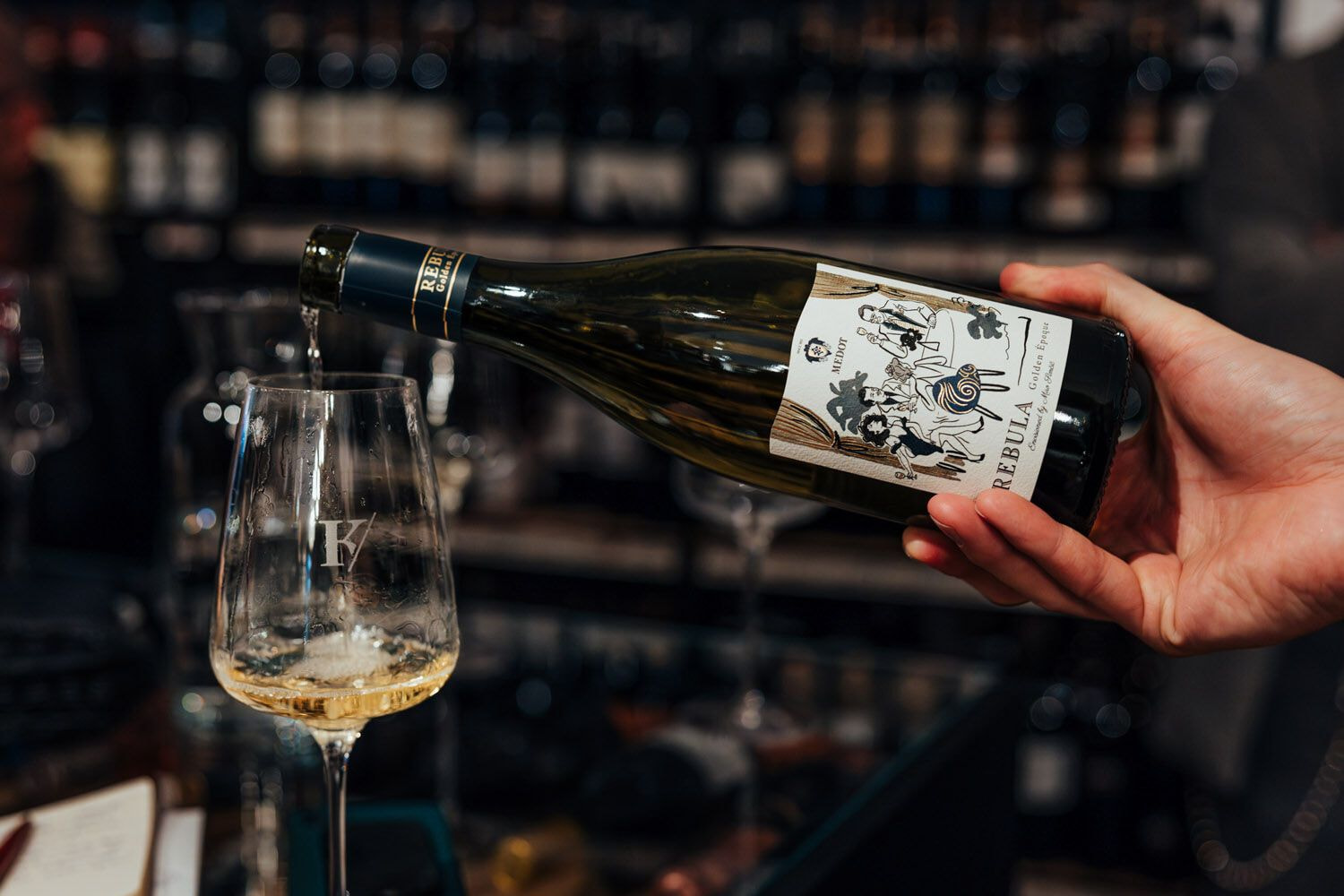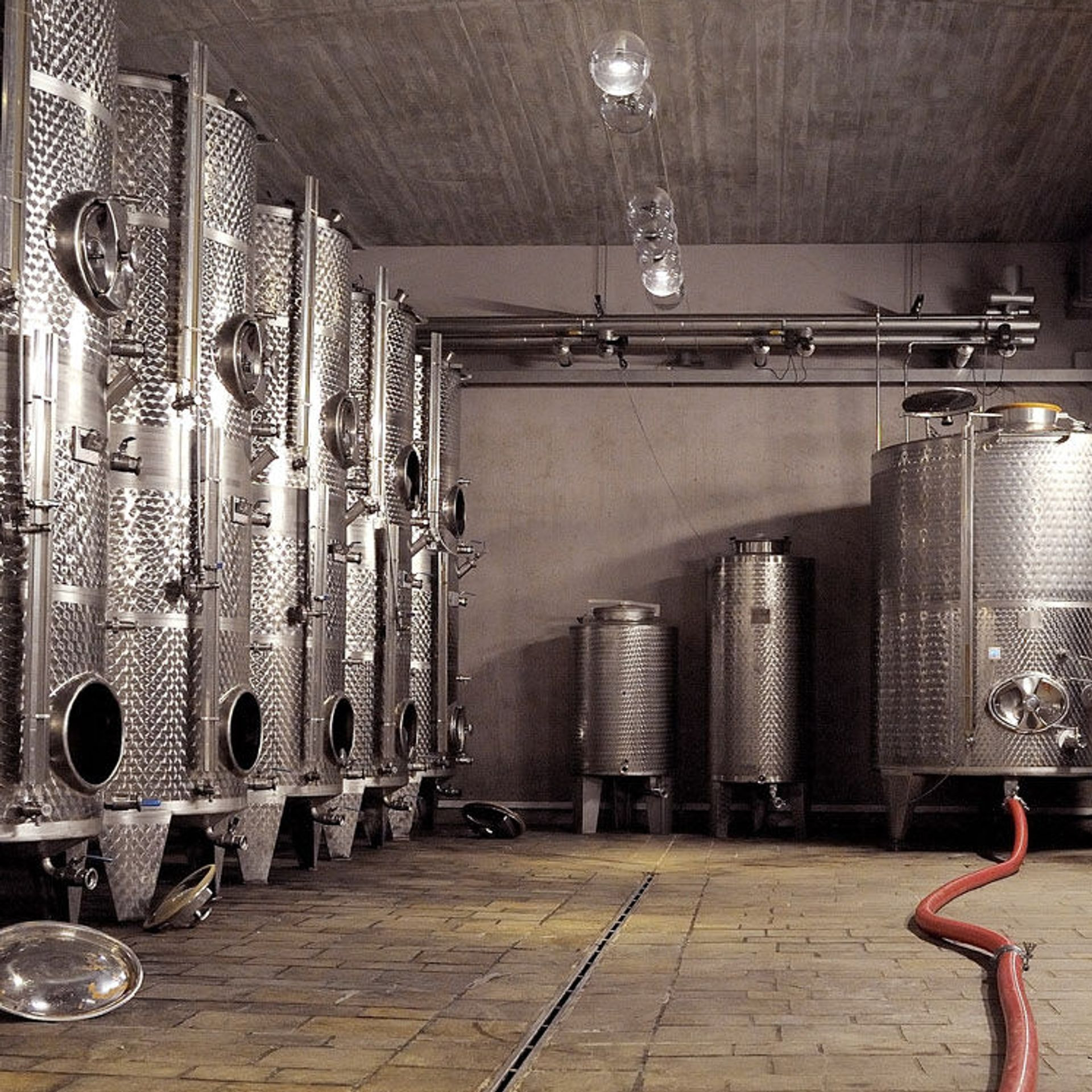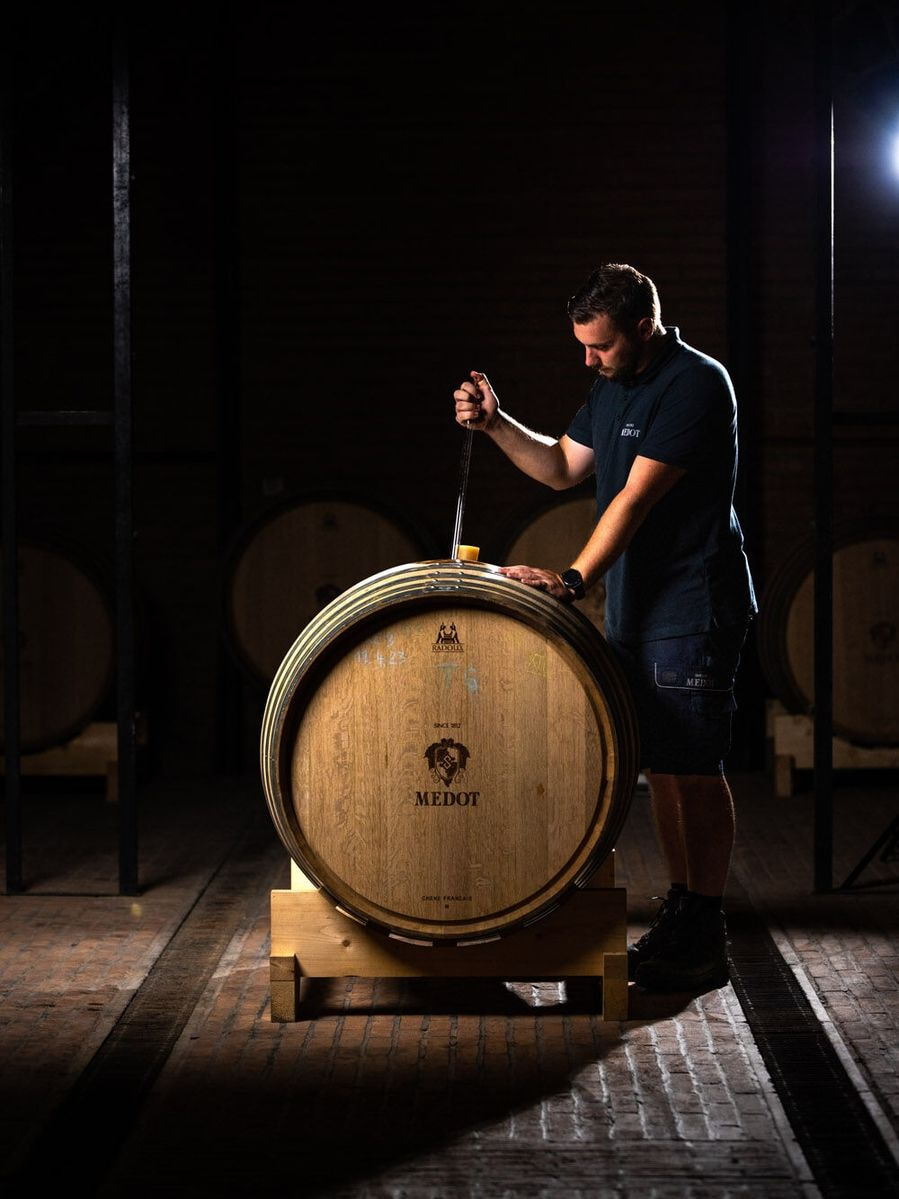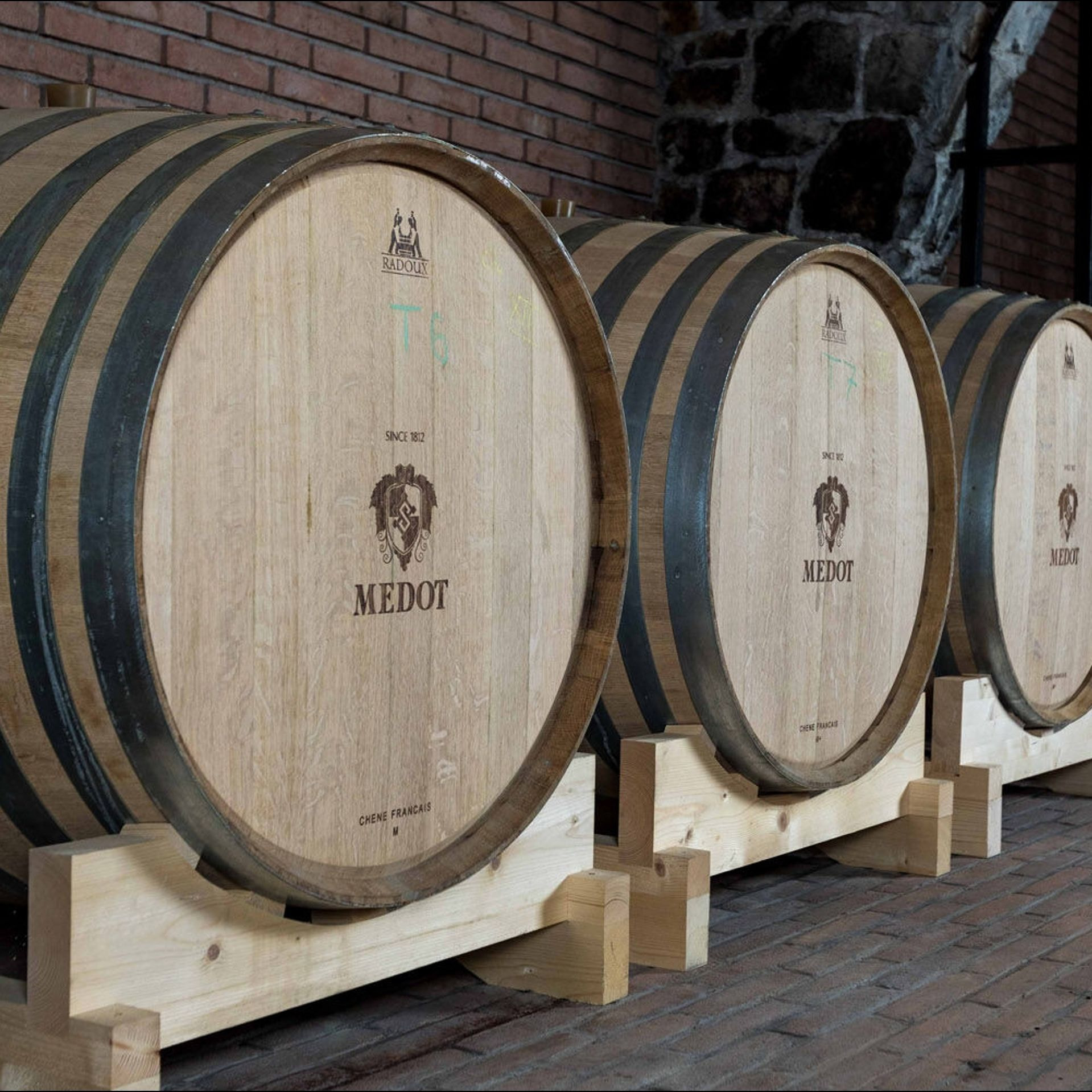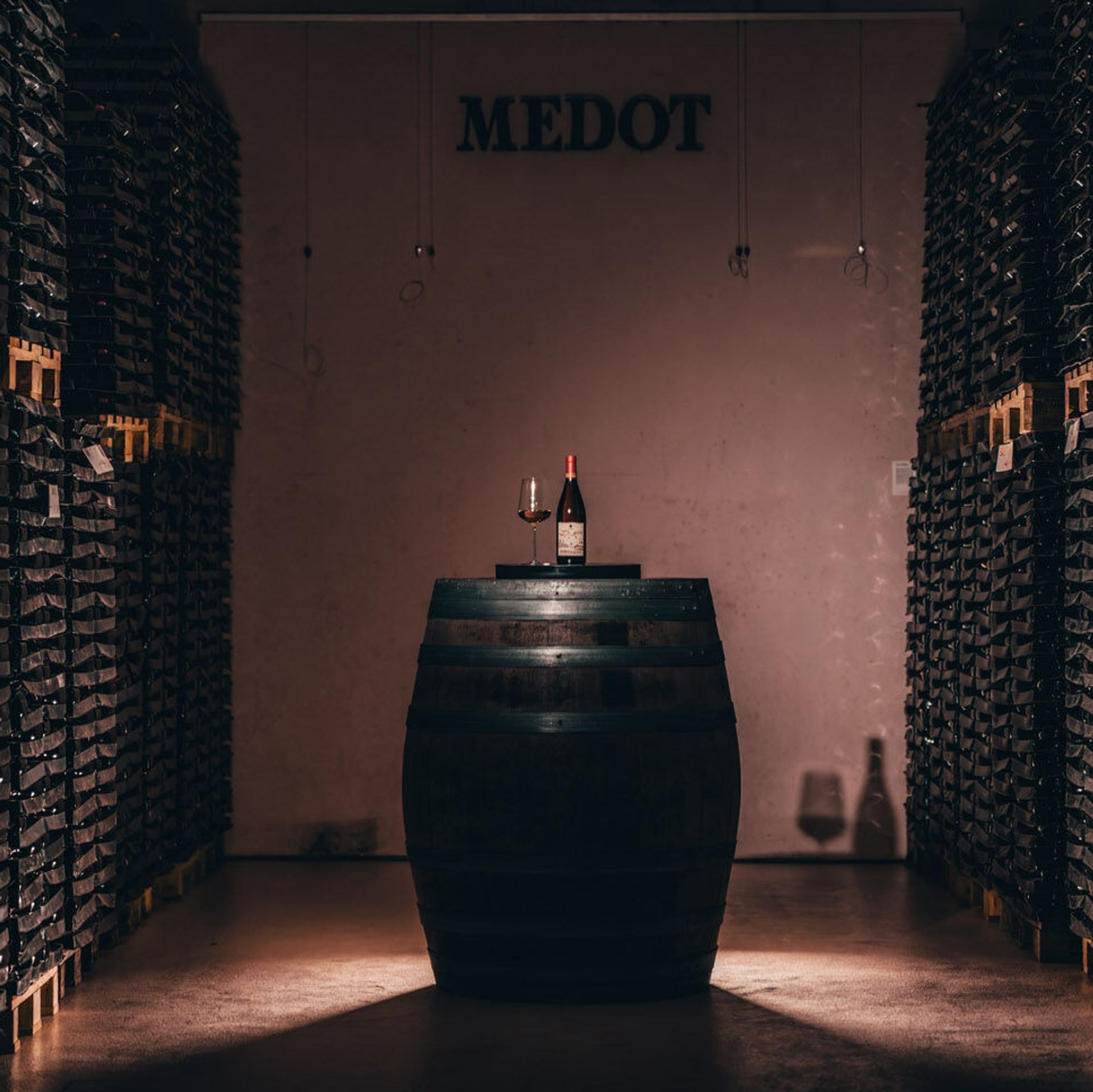Vintner's selection:
The maturation of wine truly begins in the vineyard. Climate, soil, location and the age of the vines, along with careful vineyard management, all influence the quality of the grapes, which will determine the flavors and aromas of the wine. The right decision about harvest timing is crucial, as it affects the final balance between acidity, sugar, and phenolics, which will be the basis for maturation.
Work in the cellar - maceration and fermentation:
After harvest, the grapes arrive in the cellar, where the philosophy of the cellar and the work of the winemaker, oenologist, and cellar master are reflected in the processes of maceration and fermentation. At Medot, a portion of the selected grapes is gently pressed immediately, while another portion undergoes maceration for 12 hours before pressing, in preparation for two different Rebulas, the fresher Rebula Journey and the more complex Golden Époque. The must is cooled to 8°C and clarified, followed by controlled fermentation at 16°C after two days. Fermentation temperature and yeast selection are key factors influencing the wine's final structure and aroma. At Medot, fermentation takes place in stainless steel tanks, preserving the freshness and purity of the varietal characteristics.

